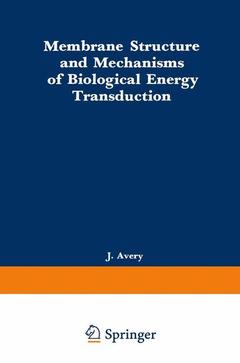Membrane Structure and Mechanisms of Biological Energy Transduction, 1973
Coordonnateur : Avery J.

Date de parution : 03-2012
Ouvrage de 602 p.
15.2x22.9 cm
Disponible chez l'éditeur (délai d'approvisionnement : 15 jours).
Prix indicatif 52,74 €
Ajouter au panierThème de Membrane Structure and Mechanisms of Biological Energy... :
Mots-clés :
ATP; Lipid; Oxidation; cell membrane; energy; enzyme; enzymes; metabolism; mitochondria; phosphorylation; photosynthesis; protein; protoplasts; respiration; synthesis



